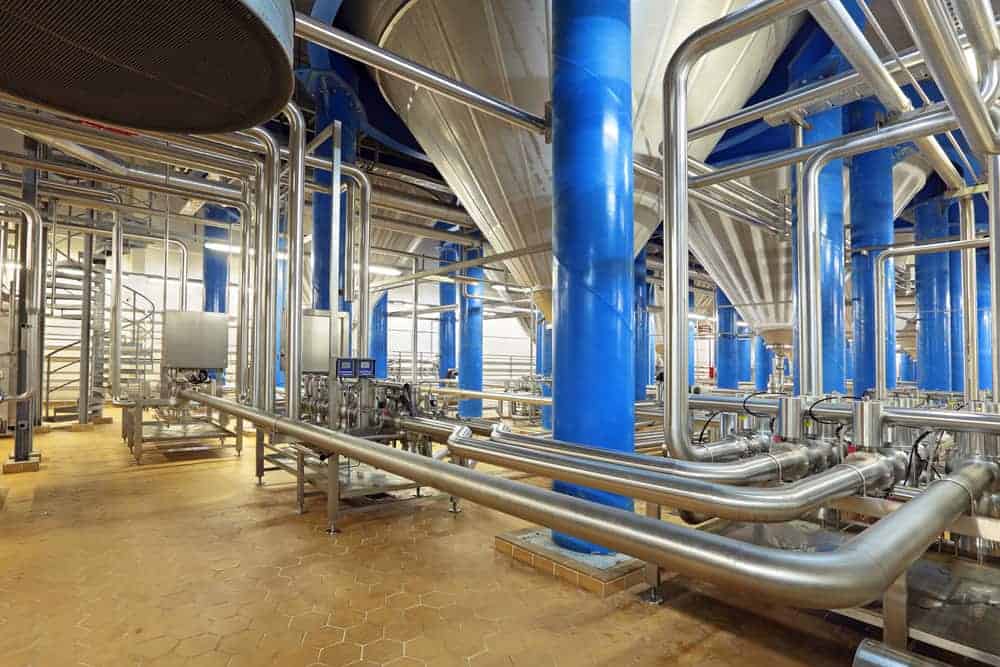
Food-grade, medical, or pharmaceutical manufacturing demands sanitary metalworking practices, as contamination can result from even a minor dent. For these applications, the choice of material, welding type, and finishing procedure all hold great importance. Stainless steel is a common choice in these industries because of its smooth finish and corrosion-resistant properties. However, the same smoothness cannot be guaranteed in the weld sections. To ensure the best results, manufacturers can employ TIG (Tungsten Inert Gas) welding in conjunction with electropolishing.
Sanitary Welding and Finishing Practices
Sanitary tubes, pipes, vessels, and similar critical components in food or medical processing industries require consideration during welding to avoid corrosion and contamination. Many industries leverage the advantages of stainless steel for these components due to its excellent weldability, mechanical strength, corrosion resistance, and smooth finish.
Without a proper welding procedure, however, weld defects may occur. Stainless steel welding defects include porosity, hot cracking, inclusions, and oxidation. Additionally, these defects can also lay the groundwork for contamination and bacterial growth. Utilizing TIG welding can help manufacturers avoid these defects. And by following the TIG process with electropolishing, uneven weld surfaces can obtain a smooth finish.
TIG Welding
The initial steps to ensure sanitary welding include:
- Cleaning the welding surface
- Cleaning the weld heads
- Checking power supply calibration
- Performing the weld with TIG (Tungsten Inert Gas).
While there are other welding options, TIG is the most effective process for retaining the microstructural properties of stainless steel while ensuring precision.
The controlled heat input and amperage with TIG means the weld can be performed with precision, reducing the chances of an incomplete weld, hot cracking, and pore formation. Likewise, sufficient shielding gas coverage and control can prevent potential impurities.
For high-quality results, it is also necessary to check the size and tip geometry of the electrode. With the correct equipment and a skilled operator, smooth-finished welds free of defects can be accomplished.
Electropolishing
Once the stainless steel welding is complete, finishing can be achieved with the electropolishing method. In this process, the welded piece is immersed in the electrode, where it is connected to the positive terminal to form the anode. The cathode is connected to the negative terminal and can include metals like lead, zirconium, or stainless steel. A highly viscous and concentrated acid solution is often used as an electrolyte.
As the current passes from anode to cathode, the micron-level thickness of the surface layer of the anode (workpiece) dissolves into the electrolyte. Rough elements in the metal surface—like burrs that can form during welding—dissolve quicker than the surface layer, creating a smoother and more level surface. This process of smoothing is also called anodic leveling.
Why Electropolish Stainless Steel?
Stainless steel (especially 300 and 400-series) is the most commonly electropolished metal. Listed below are several advantages that electropolishing stainless steel can provide:
- A smooth and polished finish of the metal (removal of burrs)
- Lesser ground for contamination and bacteria growth
- Reduced friction and drag improve mechanical properties and service life of the component
- Improved corrosion resistance.
Benefits of Sanitary Welding With Stainless Steel
Sanitary systems should be contamination-free, provide a smooth finish, and exhibit excellent strength. TIG welding and electropolishing offer an ideal combination of processes to meet these sanitary welding standards. High-quality welds with an exceptionally smooth finish will dramatically reduce the risk of external contamination in critical food and beverage and biopharmaceutical industries. These processes will also result in productivity improvements and a reduced chance of weld failure.
Arc Machines, Inc. is a leading provider of high-quality and advanced welding equipment capable of precision sanitary welding of stainless steel for a wide range of industries. For inquiries regarding products, contact sales@arcmachines.com. Arc Machines welcomes the opportunity to discuss your specific needs. Contact us to arrange a meeting.




